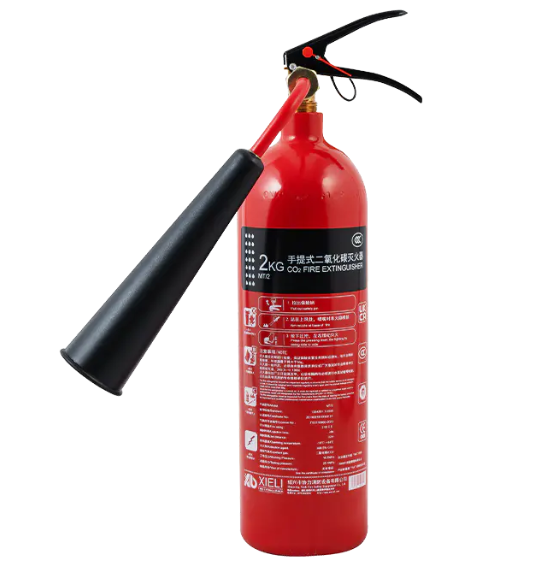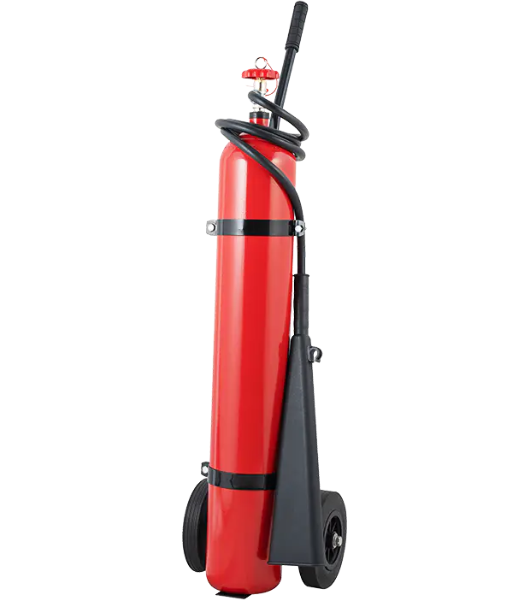Product Consultation
Your email address will not be published. Required fields are marked *

What are the key safety features built into a carbon steel CO₂ fire extinguisher to prevent accidental discharge?
Apr 01,2025
How does the nozzle design of a carbon steel CO₂ fire extinguisher contribute to the precision and effectiveness of its discharge?
Mar 25,2025
How does the discharge rate of CO₂ from a trolley-type extinguisher impact the fire suppression process?
Mar 17,2025
CO₂ fire extinguishers are ideal for environments where cleanliness is critical, such as in offices, laboratories, data centers, and on electrical equipment. Unlike foam or powder extinguishers, CO₂ discharges gas that leaves no residue behind. This eliminates the need for cleanup after use, which can be especially important in sensitive areas where the residue from foam or powder could damage equipment or require costly cleaning procedures.
CO₂ fire extinguishers are highly effective for tackling electrical fires, as CO₂ is non-conductive. This makes them a safer choice for fires involving electrical equipment, computers, servers, and machinery. Foam and powder extinguishers can leave conductive residue or cause further damage to electrical components, making CO₂ a preferable option in these scenarios.
CO₂ is a gas, so it doesn't cause damage to sensitive equipment or materials during discharge. Foam and powder extinguishers, on the other hand, can cause staining, clogging, and damage to sensitive electronics and machinery. CO₂’s non-invasive nature makes it ideal for use in environments where equipment must remain unharmed, such as IT rooms, control panels, and data storage areas.
CO₂ works by displacing oxygen in the fire area, effectively suffocating the flames. This process happens very quickly, leading to rapid fire suppression, especially in cases of small or contained fires. Foam and powder extinguishers, while effective, may take a bit longer to suppress fires and can leave a layer of foam or powder on the fire and surrounding area, which may hinder further investigation or recovery.
CO₂ fire extinguishers are particularly effective on Class B (flammable liquid) and Class C (electrical) fires. The ability to suppress fires involving flammable liquids like oils, paints, and solvents, as well as electrical fires, makes CO₂ an ideal choice in industries like manufacturing, telecommunications, and automotive, where these types of hazards are more common.
Unlike powder extinguishers that release chemical compounds (such as monoammonium phosphate) or foam that contains chemicals, CO₂ is a naturally occurring gas and doesn’t release toxic substances when used. This makes CO₂ extinguishers a safer option for fire suppression, particularly in food production, pharmaceutical facilities, and any industry where exposure to chemicals should be minimized.
CO₂ fire extinguishers are generally more compact and lighter than foam or powder extinguishers, especially in smaller sizes. This makes them easier to handle, store, and maneuver, especially in environments where space is limited or where the extinguisher must be quickly deployed in tight spaces, such as server rooms or laboratories.
Unlike foam, which may involve water content that could damage materials and lead to secondary water damage (e.g., rusting metal or damaging documents), CO₂ is a gas and doesn’t pose a risk of water damage. This is especially important in environments where materials like paper, electronics, or delicate machinery need to remain undamaged by water or foam residues.
What safety precautions should be taken when using a CO₂ fire extinguisher to avoid injury or damage?
Why does Trolley-Type CO₂ Fire Extinguisher leave no residue after use?
Your email address will not be published. Required fields are marked *